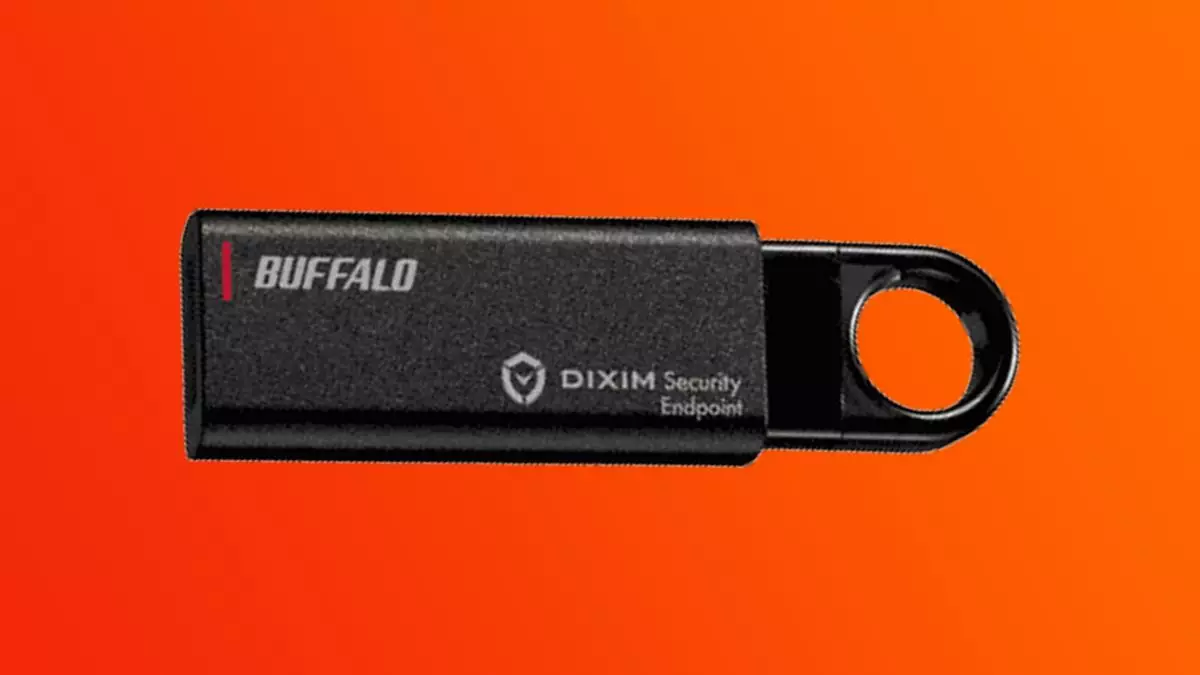USB flash drives, though seemingly harmless, are often underestimated in terms of the potential cybersecurity threats they can pose. The Buffalo RUF3-KEV emerges as a significant contender in the market, prioritizing security features that are particularly compelling for those who frequently handle sensitive data. This article delves into the drive’s advanced functionalities, the importance of safeguarding against unseen threats, and the broader implications for users who often overlook the risks associated with USB devices.
While USB flash drives provide unparalleled convenience in transporting and transferring files, they also harbor substantial risks. Cyber attackers exploit these ubiquitous devices as vectors for malware, making them one of the leading causes of data breaches. A pertinent example is the recent activities of a cyberespionage group known as GoldenJackal, which effectively bypassed secure systems by deploying malware through USB drives in a diplomatic setting. Such cases underscore the dangers inherent in using standard USB devices without robust security measures.
The Buffalo RUF3-KEV: A Security-Focused Alternative
Responding to these cyber threats, the Buffalo RUF3-KEV distinguishes itself with a formidable suite of security features. At its core is the DiXiM Security Endpoint, an embedded anti-malware system designed to conduct real-time surveillance of files stored on the device. This feature, in conjunction with the built-in antivirus scanner, provides multiple layers of defense against potential infections during file transfers. The importance of these proactive measures cannot be understated, particularly in an era where the integrity of personal and organizational data is constantly at risk.
Additionally, password authentication serves to further secure the drive, preventing unauthorized access to sensitive information. This multifaceted approach fosters a sense of assurance for users who prioritize data integrity.
Design Features That Enhance Usability
Beyond its security capabilities, the Buffalo RUF3-KEV also highlights practical design elements tailored for user convenience. Offering storage capacities of 16 GB, 32 GB, and 64 GB, it caters to diverse needs. The capless “auto-return” sliding design mitigates dust accumulation and protects the connection port, significantly increasing the drive’s longevity and usability. Users can appreciate these design choices, as they marry functionality with ease of use—a critical factor in the widespread adoption of secure USB drives.
Global Availability and Market Prospects
As of now, the Buffalo RUF3-KEV is primarily available in Japan, raising questions about its accessibility in other regions. With Buffalo’s operational presence in the United States, there remains hope that this innovative product will reach a broader audience. It raises the intriguing possibility of a shift in how consumers prioritize purchasing secure USB drives, especially as awareness of digital threats continues to grow. For users outside Japan, the option of international shipping exists, albeit at a potentially elevated cost.
Despite the advanced security features of the Buffalo RUF3-KEV, skepticism lingers regarding the use of USB drives, particularly used ones. A study from 2016 revealed that many individuals are willing to plug in found USB drives, highlighting a concerning tendency to neglect basic cybersecurity practices. The continued prevalence of this behavior signifies an ongoing need for enhanced public awareness and education regarding the significant risks associated with unverified USB devices.
While Buffalo’s efforts to integrate advanced security measures into its drives are commendable, users must also exercise caution and mindfulness about their data practices. Habits need to change, and individuals should be encouraged to adopt a more vigilant approach when using USB flash drives.
The Buffalo RUF3-KEV serves as a pioneering example of how technology can fend off the lurking dangers associated with USB flash drives. By integrating robust security features, Buffalo not only addresses existing vulnerabilities but potentially sets a new standard in the industry. It is a call to action for other manufacturers to follow suit and innovate towards enhancing the security of their products. Ultimately, safeguarding our digital assets should not only encompass hardware but also an embrace of awareness that empowers users to make informed decisions about their cybersecurity.

